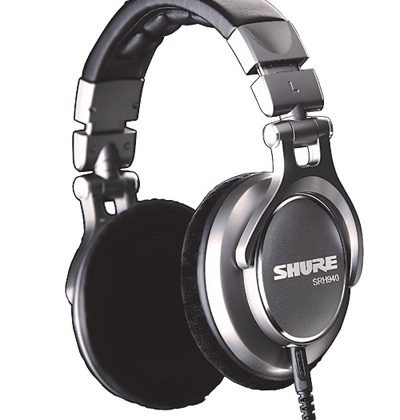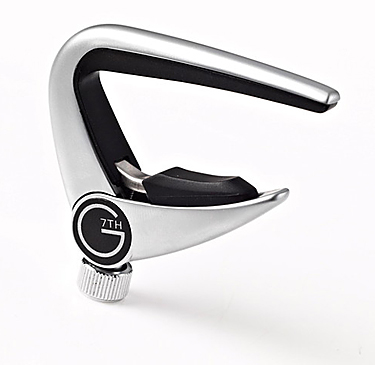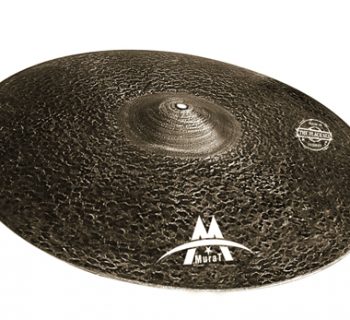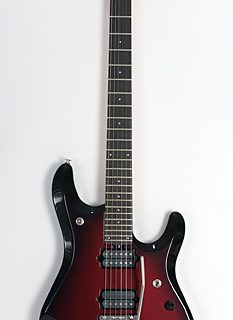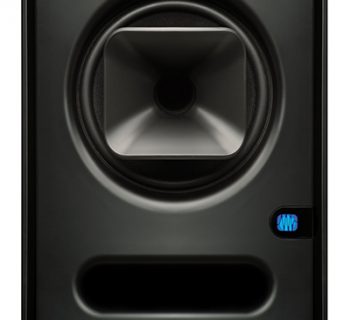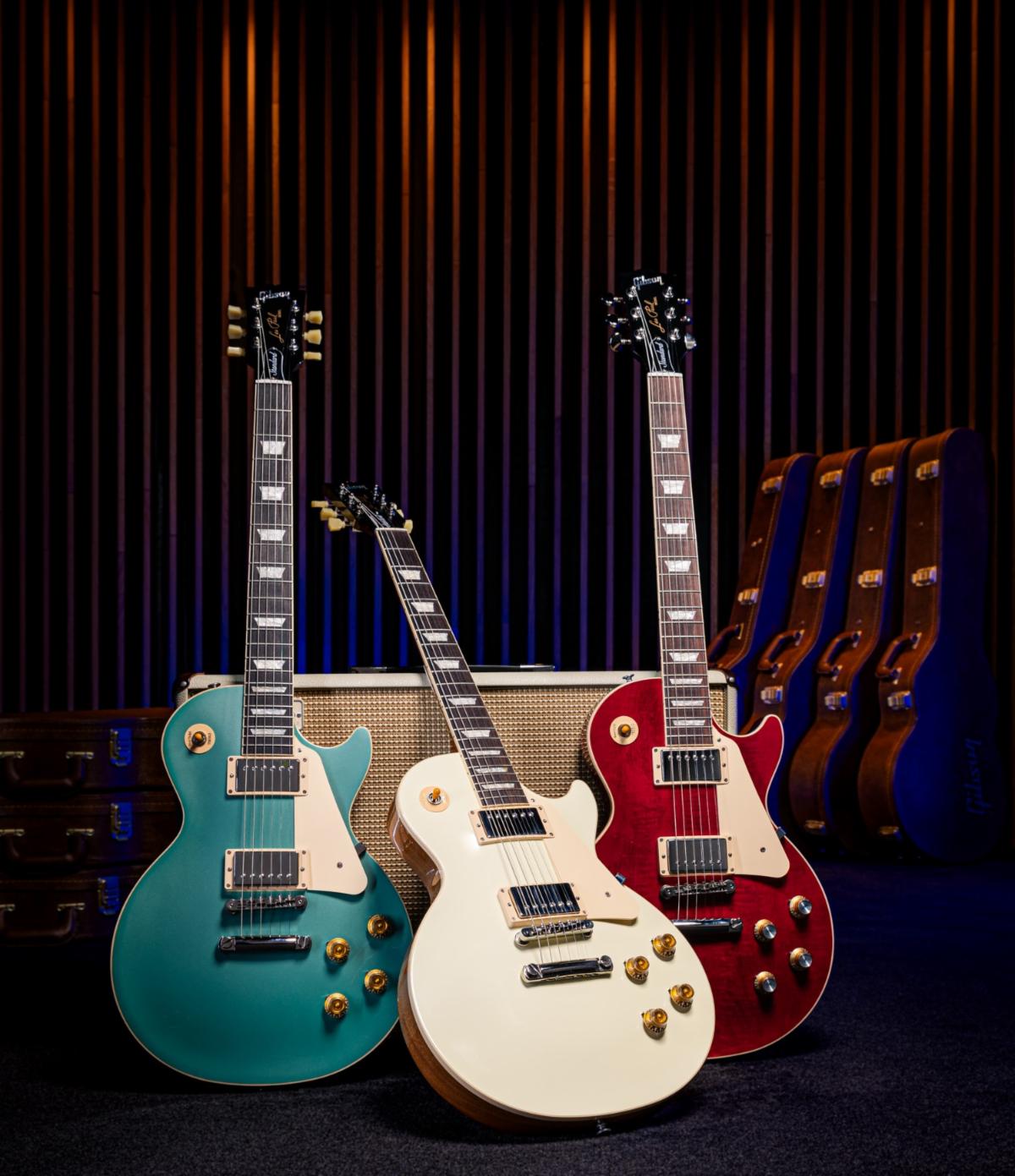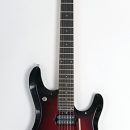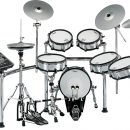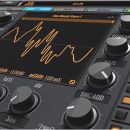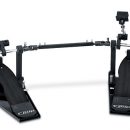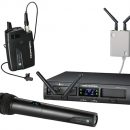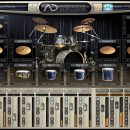 In 2010, Shure floored us with their new studio headphones. The SRH840 were super-comfortable, sounded fantastic, and delivered a smooth sound that was non-fatiguing. Since that time, they have been our go-to headphones at the mixing desk whenever we want to evaluate mixes or do some tracking.
In 2010, Shure floored us with their new studio headphones. The SRH840 were super-comfortable, sounded fantastic, and delivered a smooth sound that was non-fatiguing. Since that time, they have been our go-to headphones at the mixing desk whenever we want to evaluate mixes or do some tracking.
Not content to leave well enough alone, Shure just sent us the new flagship cans in their ever-expanding line of headphones: the SRH940, and we have to say, Damn! Not in a bad way, mind you, but in the way that says, “Now I want to use these instead.” A few strategic and subtle tweaks in comfort and sound each contribute to a slightly different experience that takes a great monitoring product and makes it even better — depending on your requirements and musical preference.
| Category | Value | Rating |
| Features | 20% | |
| Usability | 25% | |
| Sound | 25% | |
| Documentation & Support | 10% | |
| Price | 20% | |
| OVERALL RATING = 3.8, which earns it a WIHO Award! 3.6 stars or better: Outstanding, WIHO Award 3 stars or better: Worth considering 2 stars or better: Suited to specific needs 1 star or less: Not recommended |
||
Be sure to check out our in-depth review of the SRH840 — still a great choice for many recording pros, and the SRH440, a solid headphone for tracking.
Features
The SRH940 and SRH840 share many attributes including a 40mm neodymium magnet, but while the SRH840 has a frequency range of 5 Hz – 25 kHz, the new SRH940 has a little more “air up there” with an extended range of 5 Hz – 30 kHz. As with the SRH840, the new headphones are capable of handling high SPLs up to1000 mW. As you might expect with any loudspeaker or headphone, those specs don’t tell the entire story in terms of sonic results — the new drivers do sound different from the SRH840.
The headphones are a closed-back design with circumaural, padded earpieces that are slightly oval in shape (to more ergonomically fit the contours of your ears). The headband is leather-wrapped, with soft, nubby pads on the underside for comfort. The user-replaceable ear pads are covered in velour, with a spare set included in the lunchbox-sized hard case.
The headphones include both a coiled cord (10 feet) and a straight (8.2 feet) cord: lockable, detachable, with a 1/8” gold-plated connector on the end, plus an included gold-plated 1/8” to 1/4" adaptors that securely screws into the end of the cable.
Usability
These headphones are extremely comfortable to wear for extended periods of time, and the velour pads give them a very luxurious feel. Just like the other models in the line that we’ve reviewed, the SRH940 received praise from all the editors who had a chance to check them out in our studio.
The detachable cable mechanism is great, as headphone cables routinely get trashed from wear-and-tear in an active tracking environment. The twist-lock connection ensures that you don’t accidently unplug yourself.
Whether or not these are truly more comfortable than the SRH840 is really a matter of personal taste. Not everyone likes the feel of velour, but we liked it, and found these pads cooler on the ears after a long listening session by comparison. If you favor leather pads, not a problem. You can order accessory part #HPAEC840 for $19.99. Those are replacement pads for the SRH840, and they are interchangeable with the SRH940.
Many premium headphones deliver what is referred to as hearing fatigue, just like some studio monitors. Listening to them for extended periods of time can lead to headaches or just an unpleasant, unsettled discomfort. Part of the joy in keeping these Shure headphones on our heads was that they were not fatiguing. We never felt like we needed a break from listening/tracking in these headphones due to hearing fatigue.
Whether tracking, mixing, or just listening to music, sound isolation was excellent with the SRH940 headphones.
The headphones can be swiveled 90 degress for handholding a single earpiece to the head, and we found that Shure’s design was less flimsy than some other headphones we’ve relied upon in the past.
For dedicated mixing sessions, we’d still love to see a new model featuring an open-back design to allow for some external signal bleed from one ear to the other, but if you like to mix in public, the closed-back design will certainly prove more beneficial. Plus, you can pull double-duty with this design, using the headphones for tracking as well as mixing.
We prefer the simple padded bag included with the SRH840 over the supplied hard case, though, as these aren’t the kinds of headphones you’re going to leave in the box on a shelf. The box is far less portable than the pouch.

Sound
The SRH940 sound fantastic for both mixing and other critical listening tasks, but they do possess a very subtle difference in sound from the SRH840. We didn’t find the high-end response yielded much of a difference despite the additional frequency range at the top [Editor’s Note: Hope that’s not just our hearing going with age…], but where we did hear a difference was in low-end clarity.
As with the SRH840, there’s a very neutral delivery of the audio, perhaps leaning a hair in the “warm” direction, but the SRH940 had more clarity in the high end of the lower frequency spectrum (think roughly 250 Hz – 450 Hz). While not delivering any appreciable difference in our perception of midrange, it was this “upper low” area where there was a touch less boominess to the sound, and more clarity. For mixing rock and pop, we found this subtle improvement definitely gave the nod to the new SRH940, but if you’re mixing bass-heavy club music, you may actually prefer the slightly fuller low-end response of the SRH840.
Documentation and Product Support
If you’re not sure how to operate a set of headphones, we don’t really have a tutorial on that subject, but fear not, because there’s a tiny L and R symbol on each side of the headphones to get you started. You can listen with confidence, knowing that you’ve got the correct ears covered. Now, whether or not all of your other wiring in the studio got left and right straight is another story! Plus, the headphones include an owner’s manual that instructs you in the basics of their use, the audio specs, and their care.
Price
The Shure SRH940 (MSRP $375) sells for $300, approximately $100 more than the similar SRH840. It’s a very good price given the quality, comfort, and sound quality, and comparable models from the more established headphone companies will set you back even more cash.
Professional engineers should be very happy with either pair, but for critical listening, we have to give the nod of approval to the SRH940, which took a great set of headphones and made them even better.
Contact Information
Shure Inc.
www.shure.com
| Evaluation Short-List |
|

